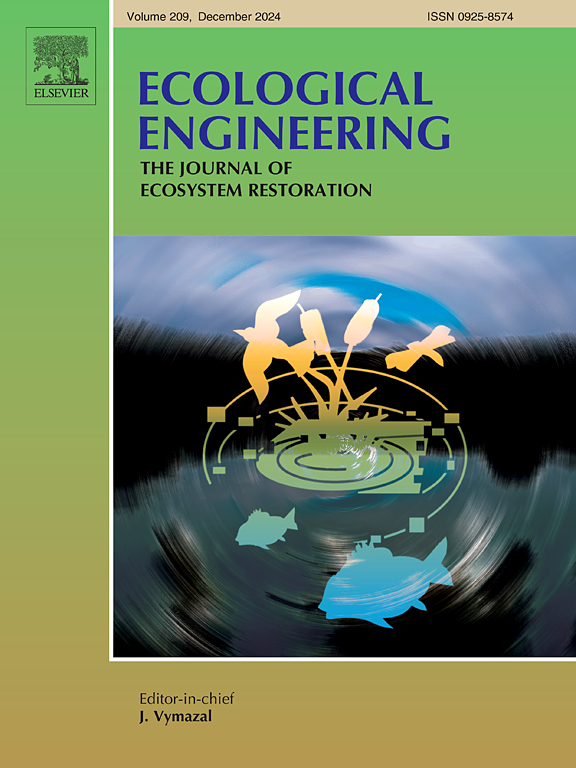Quantifying the impact pathways and driving mechanisms of increased forest CS: A comparative study case from typical karst ecologically fragile and non-karst areas
IF 3.9
2区 环境科学与生态学
Q1 ECOLOGY
引用次数: 0
Abstract
At present, the impact path and driving mechanism of increased forest carbon sequestration (CS) in the karst areas of southwestern China have not been clearly quantified. Quantifying the impact pathways and driving mechanisms of increased forest CS is a complex and important research field. By comparing typical karst and non-karst areas, we can gain a deeper understanding of the mechanisms and patterns of forest CS under different geographical and ecological conditions. This helps to develop more effective forest conservation and restoration strategies to address the challenges of global climate change and ecological crisis. Therefore, this study used random forest regression and structural equation modeling to select 14 latent variables based on 19,587 samples, including climate factor (CF), site environment (SC), human activity (HA) interference, and ecological engineering (EE), to study the key influencing factors and dominant driving pathways of forest CS change. The results indicate that forest restoration in karst areas is the main source of changes in vegetation carbon sequestration (VCS). Farmland (64.60 %), shrubs (27.83 %), and grasslands (7.57 %) were the main land types contributing to the transition to forest restoration. The trend of forest vegetation increase in karst ecologically fragile areas will gradually reach a stable state as the forest area saturates. Ecological engineering is the most direct and main driving force of forest vegetation restoration (VR) in karst areas, with an impact path coefficient of 0.62 (p < 0.01). Secondly, it's also directly influenced by anthropogenic interventions and climate change and indirectly negatively affected by the site environment. The order of impact was as follows: EE > HA > CF > SC. Although climatic conditions also had a positive impact on forest VR (0.093, p < 0.01), the short-term impact on CS changes during forest restoration in karst areas was not significant. The site environment indirectly affected the CS change of forest vegetation in karst areas by influencing human activities and then affecting the VR effect, with an impact path coefficient of −0.13 (p < 0.01). The results help us to understand more deeply the process of forest VR and CS changes in karst areas and the influence pathways of the driving factors, which can provide a reference basis for the regulation of CS in forest management.
求助全文
约1分钟内获得全文
求助全文
来源期刊

Ecological Engineering
环境科学-工程:环境
CiteScore
8.00
自引率
5.30%
发文量
293
审稿时长
57 days
期刊介绍:
Ecological engineering has been defined as the design of ecosystems for the mutual benefit of humans and nature. The journal is meant for ecologists who, because of their research interests or occupation, are involved in designing, monitoring, or restoring ecosystems, and can serve as a bridge between ecologists and engineers.
Specific topics covered in the journal include: habitat reconstruction; ecotechnology; synthetic ecology; bioengineering; restoration ecology; ecology conservation; ecosystem rehabilitation; stream and river restoration; reclamation ecology; non-renewable resource conservation. Descriptions of specific applications of ecological engineering are acceptable only when situated within context of adding novelty to current research and emphasizing ecosystem restoration. We do not accept purely descriptive reports on ecosystem structures (such as vegetation surveys), purely physical assessment of materials that can be used for ecological restoration, small-model studies carried out in the laboratory or greenhouse with artificial (waste)water or crop studies, or case studies on conventional wastewater treatment and eutrophication that do not offer an ecosystem restoration approach within the paper.
 求助内容:
求助内容: 应助结果提醒方式:
应助结果提醒方式:


